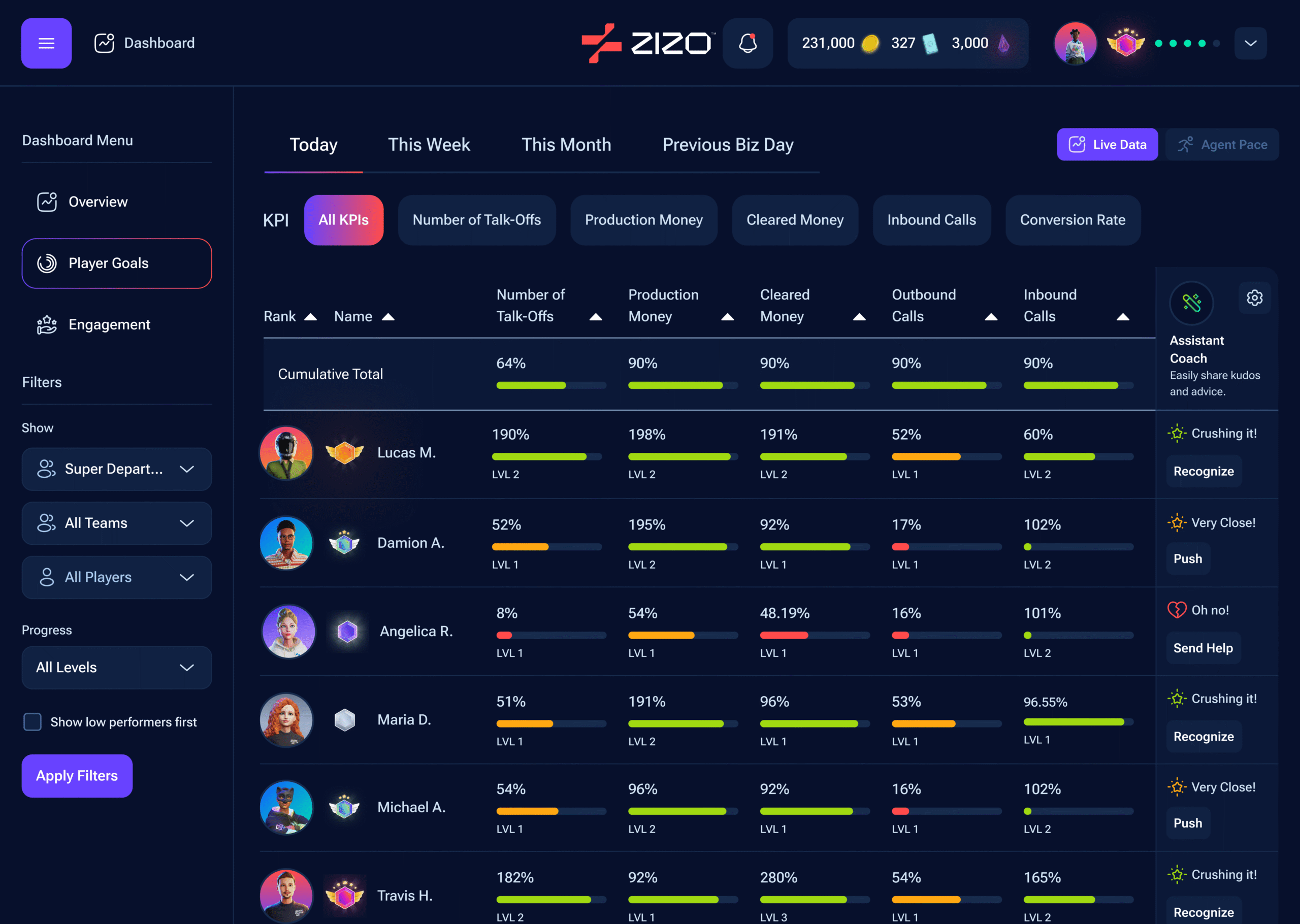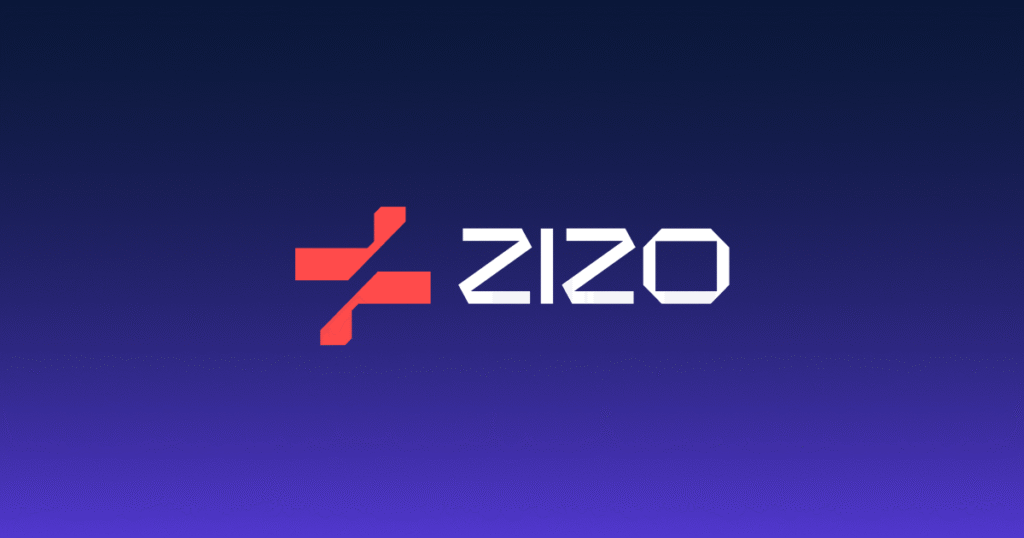Here’s something most HR leaders overlook: 88% of employees say they’re happier when using gamified software at work. Yet walk into any company and you’ll find the same tired performance management systems that have been around for decades.
The disconnect is stunning. We know what motivates people. We’ve studied the science. We have the technology. But most companies still rely on annual reviews, delayed feedback, and recognition programs that somehow miss 73% of employees entirely. The result? Billions lost to disengagement every year.
Gamification changes this completely. Not with gimmicky badges or pointless leaderboards, but by applying actual behavioral science to how we recognize achievement, track progress, and motivate teams. Companies getting this right are seeing 21% productivity jumps and 24% drops in turnover.

What Is Gamification in HR?
At its core, gamification means taking the stuff that makes games addictive and applying it to work. Progress bars. Achievements. Instant feedback when you do something well. Clear goals you can actually see yourself hitting.
Traditional HR systems completely miss this. Someone crushes it in Q1, and by the time their annual review rolls around in December, nobody remembers and nobody cares. Employee gamification software closes that gap by acknowledging achievements right when they happen. Not next week. Not next quarter. Now.
The research backs this up. Employees who get daily feedback are 3.6 times more likely to stay motivated compared to those stuck waiting for annual reviews.
Why This Matters Now
Today’s employees grew up with apps that give instant feedback and games that show progress bars. They expect to see how they’re doing in real-time, not once a year in an awkward conversation with their manager.
The numbers: only 27% of employees say they’ve been recognized for good work in the past week. Meanwhile, 69% say they’d work harder if they felt their efforts were actually noticed. That’s not a small gap.
Employee performance dashboards make achievements visible the moment they happen. Employee engagement tools give people the instant recognition they’re craving. Companies using employee engagement strategies that include gamification see 23% higher profitability, 18% better productivity in sales, and turnover dropping anywhere from 21% to 51%.
5 Core Benefits of Gamification
1. Employee Engagement That Actually Sticks
Only 23% of employees feel they get enough recognition at work. Disengaged employees produce 18% less than engaged ones, and that gap adds up fast.
When people can track their progress on employee gamification platforms, see how they’re contributing to team goals, and get recognized immediately for strong work, engagement stops being something HR has to manufacture. Companies using HRr performance management software with gamification see employees become 2.7 times more likely to be highly engaged.
2. Productivity Gains You Can Actually Measure
Companies report productivity increases ranging from 18% to 96%, depending on how well they implement it. Three things drive these gains: transparency around metrics, instant recognition creating feedback loops, and visible progress tapping into intrinsic motivation.
Sales gamification software shows the clearest results. Sales teams with gamified tracking average 21% higher productivity. Once people get used to seeing their performance and getting regular recognition, they build habits that stick even without constant oversight.
3. Training That People Actually Complete
Traditional e-learning sits below 50% completion. Gamification flips this. AstraZeneca’s gamified training hit 95% completion. Break learning into small milestones, give immediate feedback on quizzes, and add leaderboards—suddenly people care.
4. Retention That Saves Millions
69% of employees say they’ll stick around for three or more years when gamification is part of their work experience. Why? Recognition deficit drives turnover. People leave when they feel invisible. Gamification makes sure achievements get noticed immediately.
Companies using employee engagement tools as part of their retention strategy see turnover drop 21% to 51%.
5. Better Data and Performance Visibility
Employee performance dashboards show real-time metrics on individual and team performance. Managers can spot struggles early and provide support before small issues become big problems. Employees see their own progress objectively instead of wondering if they’re meeting expectations.

5 Real Examples of Gamification in Action
1. Google’s Recruitment Puzzle
Google posted complex math problems on billboards. Solve them, and you’d unlock more challenges that eventually led to job applications. This identified candidates with both technical skills and the personality traits Google values: persistence, creativity, intellectual curiosity.
2. Deloitte’s Leadership Development Game
Deloitte created an internal game presenting participants with scenarios requiring strategic thinking, team management, and decision-making under pressure. Performance reveals leadership potential while simultaneously building those exact skills. It democratizes leadership development—employees anywhere get equal access regardless of location.
3. AstraZeneca’s Sales Training Platform
AstraZeneca created “Go-to-Jupiter,” a gamified platform for sales staff learning about key products. The results: 95% of employees complete every training module versus completion rates below 50% for traditional corporate training. Knowledge retention improved dramatically because employees engaged repeatedly with material through game mechanics.
4. Todoist’s Productivity Gamification
Todoist awards points for completing tasks, with multipliers for maintaining daily streaks and finishing work ahead of deadlines. Organizations can apply these same mechanics to routine work activities. The immediate positive feedback for task completion creates motivation that helps employees maintain productivity even through challenging periods.
5. ZIZO’s Call Center Transformation
ZIZO helps call centers and high-performance teams achieve breakthrough results through sales gamification software built on behavioral science. Results: 21% average productivity increases, 24% attrition reductions, and dramatic quality metric improvements.
Call centers benefit particularly from gamification because of clear performance metrics and high-pressure conditions. By making achievements visible and celebrating progress, gamification transforms call center work from grinding repetition into engaging challenges.
5 Elements That Make Gamification Work
1. Clear Goals That Mean Something
Skip vague objectives like “improve engagement.” Target specific, measurable goals like “increase average calls per hour by 15% while maintaining customer satisfaction above 4.2.” These specific targets enable proper game design and provide clear success metrics.
2. Immediate and Meaningful Feedback
Delayed feedback kills gamification. Effective employee gamification platforms provide instant recognition when employees accomplish objectives. The moment a sale closes or a training module completes, the system acknowledges it.
3. Progress You Can Actually See
Employee performance dashboards make progress visible in real-time. Employees see current metrics, track advancement toward goals, and understand exactly where they stand relative to expectations.
4. Recognition That Includes Everyone
Traditional performance recognition focuses exclusively on a few top performers, leaving most employees feeling invisible. Good gamification recognizes diverse achievement types: new employees get recognition for onboarding milestones, middle performers for consistent improvement, team players for helping colleagues.
5. Social Elements That Build Community
Good systems incorporate public recognition feeds where achievements get celebrated company-wide, team competitions creating shared goals, and peer-to-peer recognition. These features transform individual achievement into community experience.
Common Mistakes to Avoid
Superficial Gamification: Adding badges and points without changing underlying systems creates gamification employees see through immediately.
Ignoring Individual Differences: Not everyone responds to competition. Good systems let employees opt out of competitive elements while still participating in recognition.
Over-Gamifying Everything: When every single task triggers points and notifications, achievement recognition loses meaning.
Creating Toxic Competition: Poorly designed competition destroys collaboration. Balance individual and team metrics, create multiple categories where different employees can excel.
Letting It Die: Without ongoing evolution and fresh challenges, employees stop engaging with systems that become stale.

How to Implement Gamification
Get Clear on Goals: Identify specific business outcomes that gamification should improve. Connect gamification to business value, not HR programming.
Understand Your People: Survey employees about recognition preferences, competition tolerance, and reward types before designing systems.
Pick the Right Technology: Employee gamification software should integrate with existing systems, provide intuitive interfaces, and offer robust analytics.
Design Inclusive Recognition: Create multiple achievement categories allowing different employee types to excel: speed, quality, collaboration, improvement, consistency, innovation.
Communicate Clearly: Launch with clear communication about objectives, mechanics, and benefits. Train managers on using recognition systems effectively.
Optimize Continuously: Introduce new achievement categories when participation plateaus. Adjust point values. Refresh challenges regularly. Collect ongoing employee feedback.
Measuring ROI
Track these metrics to prove gamification works:
Productivity: Companies implementing gamification typically see productivity improvements between 18-21%.
Engagement: Monitor recognition frequency and engagement survey scores. Good gamification shows immediate improvement in recognition frequency.
Retention: Companies implementing effective gamification see turnover reductions between 21-51%. Calculate the financial impact by estimating replacement costs at 50-200% of annual salary.
Quality: Track quality metrics alongside productivity to ensure balanced improvement.
Training: Organizations implementing gamified training typically see completion rates above 90% versus traditional e-learning completion below 50%.
HR Challenges ZIZO Solves
If you’re an HR leader, you’re dealing with challenges that keep getting harder:
High Early Attrition and Poor Onboarding Retention: New hires leave before they’re even fully ramped because traditional onboarding is overwhelming and disconnected.
Difficulty Connecting Recognition and Performance: You know recognition matters, but most systems make it feel arbitrary instead of tied to actual performance.
Lack of Visibility into Engagement: You can’t tell which teams are thriving and which are struggling until it’s too late. Engagement by team or manager is a black box.
Manual Processes for Rewards and Coaching: Recognition and coaching eat up hours of admin time that could be spent on strategy.
Struggles Proving Impact: When the C-Suite asks for ROI on people programs, you’re stuck with soft metrics and survey scores instead of hard business outcomes.
Sound familiar? Here’s how ZIZO fixes these exact problems.

How ZIZO Helps HR Leaders
Gamified Onboarding Paths
New hires don’t need information dumps. They need structure. ZIZO gives them clear goals from day one, daily feedback on progress, and instant recognition when they hit milestones. They ramp faster and feel part of the team immediately instead of drowning in policies and procedures.
Recognition That Builds Culture
Peer-to-peer shoutouts, badges, and rewards make recognition scalable across your entire organization. It’s not another manual process eating your time. It happens naturally within the platform, building loyalty and connection without adding admin work to your plate.
Engagement Visibility at Scale
ZIZO gives HR and L&D teams employee performance dashboards that actually show you what’s happening. Track participation, progress, and engagement across roles and managers. See which teams are thriving and which need support before turnover spikes.
Link People Strategy to Business KPIs
Whether you’re reporting to the C-Suite or building a retention program, ZIZO gives you the performance data to justify investment in your people. Hard numbers. Clear ROI. Business outcomes that executives care about.
Let ZIZO Transform Your Team
Gamification works. Companies doing this right are seeing 21% productivity increases, 24% attrition reductions, and 95% training completion rates.
ZIZO specializes in transforming high-performance teams through employee engagement tools built on validated behavioral research. Our platform combines real-time performance intelligence with science-backed recognition systems.
We help call centers, sales teams, and high-performance organizations achieve unprecedented results. Our clients see average productivity increases of 21%, attrition reductions of 24%, and quality improvements that transform customer experiences.
Ready to stop reading about gamification and actually implement it? Schedule a demo to see how leading organizations are turning HR gamification from a buzzword into their most powerful competitive advantage.
